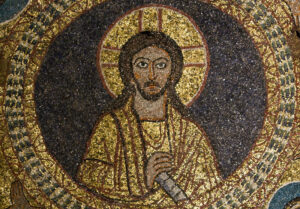The police were driving George Taylor to jail. The husband, father, and local farmer had been accused of assaulting a woman named Ruby Rogers on her rural Rolesville, NC farm. On the way, the police car that carried Taylor was intercepted by four men in blue masks. The sheriff’s office turned Taylor over to the men and took him to a ravine. A crowd of 300 people gathered and, as night fell, George Taylor was hung by his neck then shot over three hundred times. People in the crowd took bullets home as souvenirs.
For the past three years a coalition of residents in Wake County have labored to tell the story of George Taylor’s murder in 1918. At every turn, at each event, we also hear from people who tell us that the past is better left undisturbed. Many white residents of Rolesville, long rooted to this farming community 20 miles north of Raleigh, have wiped George Taylor’s lynching from their collective memory. We are told that bringing up this event not only heightens racial tension but seeds violent protests.
We’ve heeded these concerns, following the lead of black community members. We’ve not rushed the process of truth and healing, but allowed the pain of this community trauma to emerge in space for conversations that have been long suppressed. But watching white vigilantes work in concert with police reminded me of why we persist in our work of truth-telling about this period of gruesome and horrific vigilante murder.
Acts of vigilante racial murder did not end after the peak period of lynchings from 1880 to 1940. The cell phone video of Ahmaud Arbery, pursued as he ran through his neighborhood and shot by a white father and son, happened to be brought into public view. But people of color, especially black people, live with the realities of white vigilantes who enact their own warped ideas of justice as a daily terror.
This is the first time in decades that a president of the United States has not only failed to unequivocally denounce white militia groups, but described a caravan of his supporters in Portland, OR, who threw tear gas at protestors and shot them with paint guns as “GREAT PATRIOTS.” Militia groups like Minuteman Project and Oath Keepers are bolstered and called to action by the president’s tweets predicting a Civil War and his insistent claims that Democrat-led cities are unable to rein in violence.
This support for the reinforcement of the police force by armed militia groups is not limited to the president’s tweets. Police are historic collaborators with white vigilante justice. This year, police in Albequerque, NM were filmed encouraging armed counter-protestors to guard property from potential damage during a public demonstration. A few weeks ago in Kenosha, WI videos emerged of law enforcement interacting with armed white militia groups, including giving Kyle Rittenhouse a bottle of water and letting him pass into a crowd, a weapon slung over his shoulder. Police released Rittenhouse to go home after he allegedly murdered two protestors and wounded a third. In one video police vocally express their appreciation for the presence of these armed groups.
The relationship between police and vigilantes is woven into the fabric of white supremacy in the United States. Lynching is often portrayed as an extra-judicial crime in which citizens take the law into their own hands, acting as judge, jury, and executioners. But this way of perceiving lynching overlooks the persistent collaboration of law enforcement in these murders. Sanctioning armed white citizens as law enforcers is a tradition that stretches back to the earliest days of America, from the time when white settlers were offered a bounty for the scalps of indigenous people.
In the peak period of lynching, police would coordinate with vigilante groups and mobs to hand over black, brown, and Asian people accused of crimes. In 1891 in Omaha, NE a man named George Smith was seized from the county jail, beaten, and hung to death from telephone wires. The local police chief was arrested but never charged for assisting in Mr. Smith’s death. In most lynching cases, police were collaborators. Lynching mobs were an extension of the law.
Not only were citizens who participated in lynchings almost never held accountable, neither were the police, judges, and jail guards who coordinated lynchings and offered people of color up to violence, torture, and death.
Sociologist Noël Cazenave explains in an interview that “there’s a very close connection historically between the police and vigilantes in the United States.” Throughout American history, when white America perceive that black people are increasing their power, white vigilante groups consistently emerge to push the balance of power back towards white people. “Such violence is a way of keeping Black people in ‘their place,” says Cazenave.
Police collaboration with armed militias and vigilantes is not the past. Because policing is an institution rooted in the protection of property, white militias are encouraged to offer their services to defend buildings when police are called to stand down. In Snohomish, WA the police chief was fired after he welcomed armed white militias groups who showed up after false reports of “antifa” protestors spread across the internet. In Olympia, WA a police officer posed with the Three Percenters right-wing extremist group for a photo-op. The “Back the Blue” pro-police movement also has a visible presence throughout the country, not only in public sentiment but in acting as militarized back-up for the police.
“Stand your ground” laws extend the policing apparatus to private citizens, a state sanctioning of an “insidious culture of white spatial entitlement, geographical containment, and the protection of white space.” “Stand your ground” laws easily become a vigilante tool of white supremacy because they are unequally distributed among the populace, as we learned from the prosecution of Jacqueline Dixon. Dixon is one of many black women arrested after protecting herself from an estranged partner, despite her appeal to the Castle Doctrine. The Castle Doctrine pushes beyond self-defense, allowing an individual to employ the deadly force usually reserved for the police in order to protect property, including the property of the self. This merely illustrates that these laws are not intended to serve black people.
Kelly Brown Douglas writes that police violence extends beyond individual officers or white vigilantes. We live within a “stand your ground culture” that is embedded in the white supremacist foundations of the United States, where the project of American exceptionalism defined non-white bodies as less-than-human. When abolitionists reject police reforms as solutions, it is because they recognize that policing itself is a form of white supremacy, one that potentially extends the use of lethal force to all white people. State violence against black bodies does not end with formal police unit.
Douglas calls this a culture. James Cone names it a religion. “‘Law and order’ is the sacred incantation of the priests of the old order; and the faithful respond with votes, higher police budgets, and Gestapo legislation,” he wrote in Black Theology and Black Power. As it is in each generation, the church is once again at a crossroads. We must ask the same question about policing that Cone asked his readers in 1969: “the church must decide where it’s identity lies. Will it continue its chaplaincy to the forces of oppression, or will it embrace the cause of liberation, proclaiming in word and deed the gospel of Christ?”




